Se vuoi migliorare il tuo freestyle sciistico, questa guida analizza i top 5 sci da parco del [2025] per jibs, rails e salti. Gli sci corti stanno rubando la scena quest'anno, offrendo più controllo, agilità e divertimento rispetto ai loro omologhi più lunghi. In prima linea c'è Snowfeet*, con tre modelli eccezionali progettati per trick tecnici e rotazioni fluide. Ecco una rapida panoramica:
- Snowfeet* Skiblades 65 cm ($450): Perfetto per rail stretti e trick tecnici. Leggero e super reattivo.
- Snowfeet* Skiblades 99 cm ($490): Una scelta versatile per prestazioni nel parco e salti piccoli.
- Snowfeet* Short Skis 120 cm ($690): Offre stabilità per salti più grandi mantenendo un carattere giocoso.
- Atomic Bent 100: Robusto e progettato per l'uso polivalente nel parco, ma più pesante degli sci più corti.
- Line Chronic 94: Uno sci twin-tip classico, ottimo per la versatilità ma meno agile rispetto alle opzioni compatte.
Perché gli Sci Corti Sono di Tendenza
Gli sci più corti, come gli Snowfeet* Skiblades, sono più facili da imparare, portatili e ideali per rotazioni veloci e scivolate sui rail. Sono anche compatibili con scarponi da snowboard o scarpe invernali, rendendoli una scelta pratica e divertente per sciatori di tutti i livelli. Se cerchi un controllo migliore e una guida più giocosa, gli sci più corti potrebbero essere la tua prossima scelta.
Confronto rapido
| Caratteristica | Snowfeet* 65 cm | Snowfeet* 99 cm | Snowfeet* 120 cm | Atomic Bent 100 | Line Chronic 94 |
|---|---|---|---|---|---|
| Ideale per | Rails, jibs | Parco polivalente | Grandi salti | All-mountain | Versatilità |
| Lunghezza | 25.6 in | 39 in | 47,2 in | 59–71 in | 58,7–71,3 in |
| Peso | Ultra-leggero | Leggero | Leggero-medio | Medio-pesante | Medio-pesante |
| Prezzo | $450 | $490 | $690 | $600–$700 | $550–$650 |
| Compatibilità con gli Scarponi | Sci, snowboard, scarpe invernali | Sci, snowboard, scarpe invernali | Sci, snowboard | Solo scarponi da sci | Solo scarponi da sci |
L'attrezzatura Snowfeet* si distingue per il design leggero, la facilità d'uso e la compatibilità con diversi tipi di scarponi. Che tu sia un principiante o uno sciatore da park esperto, c'è un modello adatto al tuo stile. Pronto a scendere nel park? Immergiamoci! :)
I Migliori Sci da Park per [2025] | Recensito e Confrontato a Newschoolers Gear Week
Cosa Cercare negli Sci da Park
Scegliere gli sci da park giusti può fare la differenza nella tua performance nel terrain park. A differenza degli sci all-mountain che puntano sulla stabilità ad alte velocità, gli sci da park sono tutto agilità, durata e controllo per eseguire trick tecnici in spazi ristretti. Analizziamo le caratteristiche chiave che rendono gli sci da park unici.
Flessibilità e Pop
Flessibilità e pop sono la spina dorsale degli sci da park. Vorrai sci abbastanza flessibili per butter lisci ma che abbiano anche il pop necessario per i salti. Grandi nomi come Rossignol e K2 spesso progettano i loro sci da park con un pattern di flessione media, ma gli Skiblades Snowfeet* seguono una strada diversa. La loro lunghezza più corta offre naturalmente una flessione più reattiva. Per esempio:
- Il modello da 65 cm è tarato per la massima flessibilità, perfetto per manovre precise e tecniche.
- La versione da 99 cm si concentra su un maggiore pop, ideale per affrontare salti e figure più grandi.
Durabilità
Lo sci nel park è duro per la tua attrezzatura. Tra lo scivolare sui rails, colpire box e atterrare salti, i tuoi sci subiscono molti urti. Cerca sci con bordi rinforzati, topsheet spessi e nuclei robusti che possano gestire gli impatti costanti. Gli Snowfeet* Skiblades sono costruiti tenendo conto di queste esigenze, offrendo durata senza aggiungere ingombro inutile.
Controllo del bordo
Il controllo del bordo è cruciale per afferrare le partenze e gli atterraggi ghiacciati. Hai bisogno di bordi affilati e reattivi per incollare gli atterraggi e mantenerti equilibrato sui rails. Gli Snowfeet* Skiblades eccellono qui, grazie al loro design compatto che riduce la superficie di contatto. Questo rende più facile pivotare e aggiustare a metà trick, dandoti più controllo su terreni duri.
Peso e peso d'inerzia
Il peso dei tuoi sci influisce direttamente sulla tua capacità di eseguire trick. Sci pesanti rendono più difficili le rotazioni come 360 e 540 e possono affaticarti più rapidamente durante sessioni lunghe. Gli Snowfeet* Skiblades brillano in questo ambito. La loro dimensione ridotta riduce drasticamente il peso d'inerzia, rendendo le rotazioni senza sforzo e aiutandoti a conservare energia per giri prolungati nel park. Inoltre, il loro design compatto li rende super portatili e facili da maneggiare.
Lunghezza e forma
La lunghezza e la forma dei tuoi sci giocano un ruolo enorme nelle loro prestazioni nel park. Mentre gli sci più lunghi sono noti per la stabilità, gli sci più corti offrono un'agilità senza pari, fondamentale per caratteristiche tecniche come rails e jibs. Ecco un rapido confronto:
| Caratteristica | Sci corti (65–99 cm) | Sci da Park più lunghi (120 cm+) |
|---|---|---|
| Agilità | Alta | Moderato |
| Stabilità | Moderato | Alta |
| Ideale per | Rails, jibs, trick tecnici | Salti, velocità, atterraggi stabili |
| Portabilità | Eccellente | Buono |
Gli sci più corti, come gli Snowfeet* Skiblades, sono anche più facili da imparare, aiutandoti a progredire più velocemente su caratteristiche impegnative. Mentre marchi come Salomon e Atomic utilizzano costruzioni avanzate per creare sci indulgenti, Snowfeet* ottiene questo attraverso una geometria intelligente, rendendo i loro skiblades adatti ai principianti ma altamente efficaci.
Portabilità
Se sei uno sciatore urbano o qualcuno che apprezza la comodità, la portabilità è fondamentale. Gli Snowfeet* Skiblades sono abbastanza compatti da entrare in uno zaino normale, rendendoli perfetti per sessioni rapide al park o per lo sci in città. Confrontalo con il dover trasportare sci da park tradizionali da 160 cm sui mezzi pubblici o cercare di conservarli in un piccolo appartamento - è una scelta ovvia.
Scegliere gli Skiblades Giusti
Quando scegli tra i modelli Snowfeet*, pensa al tuo focus principale:
- Gli Skiblades da 65 cm (450$) sono ideali per il rail riding e i trick tecnici a terra.
- Gli Skiblades da 99 cm (490$) offrono maggiore versatilità, combinando prestazioni da park con una certa capacità all-mountain.
Entrambi i modelli offrono un'eccellente manovrabilità e hanno un prezzo molto più basso rispetto a molti sci da park tradizionali di fascia alta. Che tu sia un principiante che vuole migliorare o uno sciatore esperto in cerca di precisione tecnica, c'è un'opzione Snowfeet* per te.
1. Snowfeet* Skiblades 65 cm
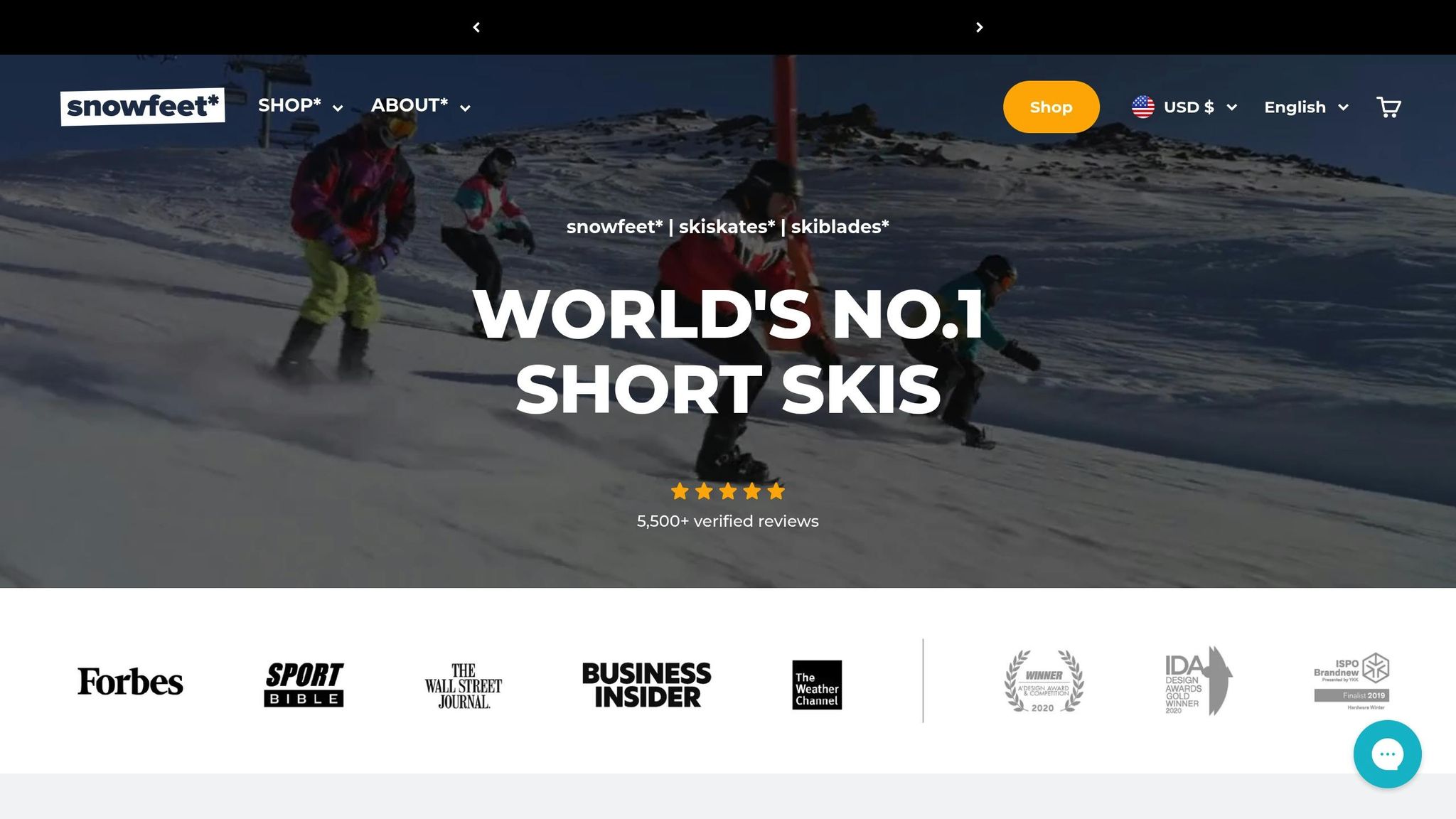
Gli Snowfeet* Skiblades 65 cm (450$) portano una ventata di novità nello sci da park concentrandosi su agilità e controllo. Questi sci compatti offrono precisione e reattività sulle strutture del park.
Flessibilità e spinta per salti e atterraggi
Realizzati con un'anima in legno sostenibile, questi skiblades offrono un pop naturale che rende buttering e trick a terra senza sforzo. La loro lunghezza più corta permette un trasferimento di energia rapido, garantendo partenze più fluide e atterraggi più morbidi rispetto agli sci tradizionali più lunghi. Questo design reattivo li rende perfetti per lunghe sessioni su rail e box.
Costruiti per Durare su Rail e Box
La durabilità è importante quando si colpiscono ripetutamente rail e box. Questi skiblades presentano una costruzione a cappuccio, un'anima in legno sostenibile e lame metalliche per resistere agli impatti e prevenire la delaminazione.
"TECNOLOGIA DI ALTA QUALITÀ - Costruzione a cappuccio + anima in legno certificato sostenibile. Lame metalliche per un controllo facile. Basi in grafite - per grande velocità e durata."
Realizzati a mano in Europa, l'attenzione ai dettagli assicura che questi skiblades resistano all'usura dello sci da park, superando le alternative prodotte in serie.
Precisione per Trick Tecnici
Per gli sciatori da park, il controllo è tutto. La lunghezza compatta di 65 cm offre un eccellente controllo del bordo, rendendo più facile affrontare rail stretti e box angusti. Con una superficie di contatto ridotta, le transizioni da bordo a bordo sono più rapide, e le basi in grafite garantiscono una scorrevolezza fluida e una presa affidabile.
Design Leggero per Rotazioni e Manovre
La costruzione leggera di questi skiblades rende le rotazioni - che siano 360, 540 o persino 720 - quasi senza sforzo. Il loro peso d'inerzia minimo aiuta anche a ridurre l'affaticamento, così puoi continuare durante lunghe sessioni nel park.
Con una valutazione di 4,97 su 5 stelle da 62 recensioni e un design premiato, i Snowfeet* Skiblades 65 cm sono diventati la scelta preferita dagli sciatori da park che cercano un'alternativa compatta e ad alte prestazioni agli sci tradizionali.
2. Snowfeet* Skiblades 99 cm
I Snowfeet* Skiblades 99 cm (490$) trovano un ottimo equilibrio tra agilità e stabilità, rendendoli ideali per affrontare varie caratteristiche del park. Offrono più stabilità rispetto al modello da 65 cm mantenendo comunque l'atmosfera giocosa che caratterizza lo sci da park.
Flessibilità e spinta per salti e atterraggi
Questi skiblades brillano per flessibilità e trasferimento di energia. A 99 cm, offrono la stabilità necessaria per salti più grandi mantenendo il rapido trasferimento di energia che rende buttering e trick a terra quasi senza sforzo. Gli sci da park tradizionali lunghi a volte possono sembrare ingombranti su ostacoli più piccoli, ma questi skiblades rispondono all'istante, rendendo le transizioni fluide e divertenti.
Inoltre, la costruzione resistente è pensata per affrontare le esigenze dello sci aggressivo da park.
Durabilità per Rail e Box
Progettati per la durabilità, questi skiblades presentano bordi rinforzati e una base sinterizzata che può sopportare l'usura delle sessioni ripetute sui rail. Che tu stia andando a Mammoth, Breckenridge o Keystone, puoi contare su questi skiblades per resistere a innumerevoli giri nel park.
Controllo del Bordo per Trick Tecnici
Quando si tratta di trick tecnici, il modello da 99 cm si distingue con un eccellente controllo del bordo. Questo rende le transizioni più fluide, fondamentale per eseguire rotazioni e slide puliti su ostacoli stretti. Se stai collegando più trick uno dopo l'altro, quel controllo extra fa davvero la differenza.
Design Leggero per Rotazioni e Manovre
La manovrabilità è un altro punto di forza di questi skiblades. Il design leggero riduce l'affaticamento durante le sessioni lunghe, e il peso d'inerzia minimo rende le rotazioni come 360, 540 e persino 720 controllate e precise. Che tu sia un principiante o uno sciatore esperto da park, questa combinazione di flessibilità e agilità rende questi skiblades una scelta solida.
3. Snowfeet* Short Skis 120 cm
I Snowfeet* Short Skis 120 cm (690$) sono i più lunghi della gamma Snowfeet*, posizionandosi perfettamente tra gli sci da park tradizionali e gli skiblades ultra-corti. Offrono un mix di versatilità e prestazioni, basandosi sui design reattivi dei loro fratelli da 65 cm e 99 cm. Se cerchi qualcosa che gestisca sia trick che velocità, questi potrebbero essere la tua scelta ideale.
Flessibilità e spinta per salti e atterraggi
A 120 cm, questi sci trovano un equilibrio tra spinta e stabilità, rendendoli ideali per salti più grandi ma comunque abbastanza reattivi per buttering e trick a terra. Il loro profilo di flessione medio offre la giusta quantità di trasferimento di energia, dando agli sciatori freestyle da intermedi ad avanzati un setup indulgente ma potente per elevare il loro livello.
La stabilità aggiunta è un punto di svolta per gli atterraggi su salti più grandi, mentre il pattern di flessione assicura un rilascio di energia fluido. Ciò significa che ottieni la spinta necessaria dai lips e kickers, rendendo ogni salto pulito e controllato.
Costruiti robusti per rail e box
Lo sci da park può essere duro per la tua attrezzatura, ma questi sci sono fatti per resistere. Sono dotati di bordi rinforzati e basi ad alta densità progettate per sopportare l'usura da rail, box e altre strutture metalliche. Questa durabilità è fondamentale per gli sciatori da park che vogliono che la loro attrezzatura duri tutta la stagione.
La costruzione rinforzata resiste meglio agli impatti ripetuti rispetto a molti sci da park tradizionali. Traduzione? Meno tempo per le riparazioni e più tempo per perfezionare i tuoi trick.
Controllo del bordo per trick di precisione
Ciò che distingue questi sci è il controllo del bordo. A 120 cm, offrono una precisione migliore rispetto ai modelli più corti, rendendo i trick tecnici e le transizioni fluidi e prevedibili. Che tu stia collegando più trick o affrontando ostacoli stretti, il controllo aggiuntivo fa una differenza evidente.
Gli esperti sottolineano spesso l'importanza di una solida costruzione del bordo per lo sci da park, e questi sci offrono quel perfetto mix di controllo e giocabilità che gli sciatori freestyle di oggi richiedono.
Design leggero per spin e movimenti rapidi
Anche con la lunghezza aggiunta, questi sci mantengono la leggerezza. Ciò significa meno affaticamento durante lunghe sessioni in park e spin più facili, che tu stia eseguendo un 360 o puntando a qualcosa di più grande. Il basso peso d'inerzia assicura rotazioni fluide e controllate e manovre rapide.
Gli sciatori nei park più famosi come Mammoth e Breckenridge hanno riferito di sentirsi più sicuri e in controllo quando affrontano trick e ostacoli con questi sci. Se stai cercando di progredire nel park, gli Snowfeet* Short Skis da 120 cm valgono sicuramente la pena di essere considerati.
sbb-itb-17ade95
4. Atomic Bent 100
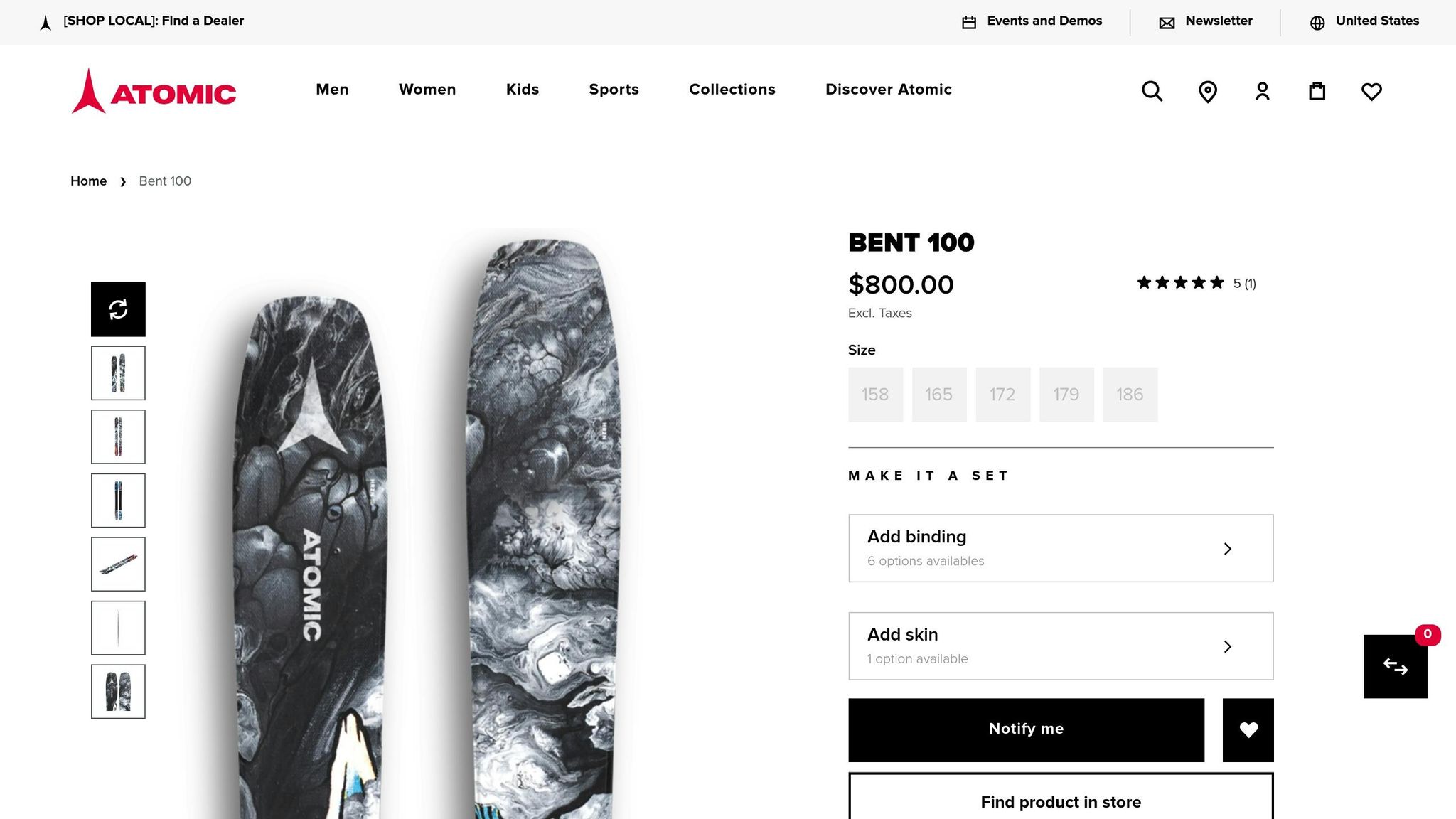
L'Atomic Bent 100 è uno sci classico da park progettato per resistere agli urti. È costruito con un design Resist Edge Park più spesso, che gli conferisce una maggiore robustezza per grindare su rail e box. Inoltre, le sue Dura Cap Sidewalls si estendono dolcemente dalla base al topsheet, con una forma arrotondata per una maggiore durata e stile.
Detto ciò, molti sciatori ora preferiscono la sensazione agile e giocosa degli skiblades Snowfeet*. Questo cambiamento dimostra perché Snowfeet* continua a essere il preferito tra gli sciatori da park in cerca di un'agilità senza pari.
5. Line Chronic 94
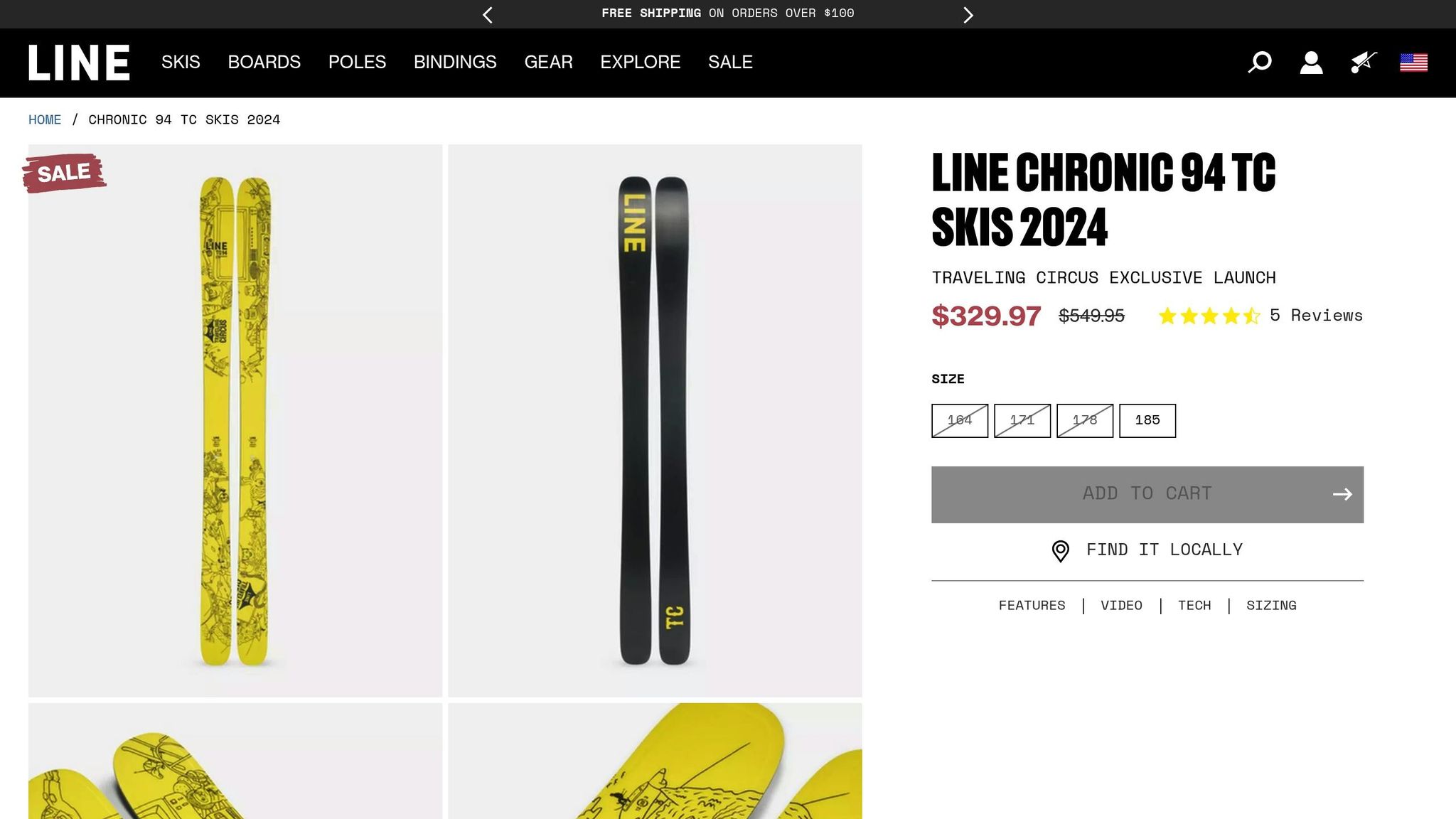
La Line Chronic 94 è uno sci twin-tip con una larghezza al centro di 94 mm, progettato per gli appassionati di park che cercano versatilità e prestazioni.
Flessibilità e spinta per salti e atterraggi
Con una flessibilità media, il Chronic 94 offre un buon pop per salti e atterraggi. Tuttavia, le sue lunghezze maggiori (da 149 a 181cm) lo rendono meno reattivo rispetto a opzioni compatte come gli skiblades Snowfeet*, progettati per movimenti rapidi e scattanti.
Peso e peso d'inerzia per rotazioni e manovre
Il profilo più lungo del Chronic 94 aumenta il peso d'inerzia, rendendo le rotazioni e i trick aerei un po' più lenti. Al contrario, gli skiblades Snowfeet*, con il loro design compatto, riducono significativamente il peso d'inerzia, permettendo rotazioni più veloci e manovre più fluide. Inoltre, l'aumento del peso d'inerzia del Chronic 94 può influire sulla sua durabilità quando si affrontano feature aggressive del park.
Durabilità per Rail e Box
Il Chronic 94 è costruito con bordi rinforzati e un topsheet resistente, rendendolo capace di affrontare rail e box. Detto ciò, il suo design tradizionale tende a subire più usura su bordi e base rispetto ai compatti skiblades Snowfeet*, meno soggetti a danni da stress durante gli atterraggi.
Mentre il Chronic 94 segue la formula classica dello sci da park, le sue prestazioni contrastano con l'agilità e la reattività che rendono Snowfeet* una scelta eccezionale per i rider da park che puntano a precisione e controllo.
Tabella di confronto sci da park
Quando si sceglie l'attrezzatura giusta per il park riding, è utile confrontare come diversi prodotti si comportano nelle caratteristiche chiave:
| Caratteristica | Snowfeet* 65cm | Snowfeet* 99cm | Snowfeet* 120cm | Atomic Bent 100 | Line Chronic 94 | Snowboard (Riferimento) |
|---|---|---|---|---|---|---|
| Lunghezza | 25,6 pollici | 39 pollici | 47,2 pollici | 59–71 pollici | 58,7–71,3 pollici | 54–62 pollici |
| Peso | Ultra-leggero | Leggero | Leggero-medio | Medio-pesante | Medio-pesante | Medio |
| Scarponi compatibili | Scarponi da sci, scarponi da snowboard, scarpe invernali | Scarponi da sci, scarponi da snowboard, scarpe invernali | Scarponi da sci, scarponi da snowboard | Solo scarponi da sci | Solo scarponi da sci | Solo scarponi da snowboard |
| Curva di apprendimento | Istantaneo | Molto facile | Facile | Moderato | Moderato | Ripido |
| Portabilità | Si adatta allo zaino | Trasporto compatto | Borsa standard per sci | Borsa standard per sci | Borsa standard per sci | Borsa standard per tavola |
| Casi d'uso migliori | Jibs, trick veloci, principianti | All-mountain park, rail, salti | Park avanzato, grandi salti | Park/all-mountain versatile | Sci tradizionale da park | Halfpipe, grandi strutture |
| Prezzo (USD) | A partire da $463.50 | A partire da $504.70 | $690 | $600–700 | $550–650 | $400–800 |
Una delle caratteristiche distintive dei prodotti Snowfeet* è la loro compatibilità con gli scarponi. A differenza degli sci da park tradizionali che richiedono scarponi rigidi in plastica, l'attrezzatura Snowfeet* funziona con diversi tipi di scarponi, inclusi gli scarponi da snowboard e persino le scarpe invernali.
"Se possiedi un paio di scarponi da snowboard o semplicemente odi gli scomodi scarponi da sci in plastica, come fanno la maggior parte degli sciatori, questi attacchi sono perfetti per te", dice Snowfeet*.
Questa flessibilità può fare una grande differenza nel comfort, soprattutto durante lunghe sessioni in park. Mentre gli scarponi da sci tradizionali possono diventare piuttosto scomodi dopo ore di utilizzo, gli scarponi da snowboard offrono una calzata più morbida e indulgente, rendendoli una scelta popolare per i rider che valorizzano il comfort.
Un altro vantaggio? La portabilità. I prodotti Snowfeet* sono abbastanza compatti da entrare in uno zaino o in una piccola borsa da trasporto, rendendoli molto più facili da trasportare rispetto agli sci tradizionali che possono essere lunghi quasi 2 metri. Questo rende le sessioni spontanee in park o i viaggi con la tua attrezzatura molto meno complicati.
Snowfeet* brilla anche per facilità d'uso. Il loro design leggero riduce il peso oscillante, il che aiuta con le rotazioni e i trick aerei. Per i principianti, questo significa una curva di apprendimento più breve e più fiducia nel provare nuove manovre. Gli sci da park tradizionali, invece, spesso richiedono più tempo e sforzo per essere padroneggiati.
Il prezzo è un altro aspetto in cui Snowfeet* si distingue. Con un solo paio che si adatta a più tipi di scarponi e stili di guida, possono evitarti di dover avere configurazioni separate per attività diverse.
"Gli attacchi da snowboard ti danno più flessibilità mentre esegui ogni tipo di trick. Sono super comodi e puoi camminarci ovunque senza problemi, il che rende la gita sulla neve un'esperienza molto più piacevole", aggiunge Snowfeet*.
Gli snowboard tradizionali hanno ancora il loro posto, soprattutto per chi si concentra su trick in halfpipe o salti enormi. Tuttavia, la loro compatibilità con un solo tipo di scarpone e la curva di apprendimento più ripida possono renderli meno attraenti per chi cerca versatilità. Questo confronto mostra perché sempre più rider si stanno orientando verso il design user-friendly e adattabile dei prodotti Snowfeet* rispetto all'attrezzatura da park convenzionale.
Perché Snowfeet* è la scelta migliore per gli sciatori da park negli USA
Gli sciatori negli Stati Uniti affrontano sfide che rendono l'attrezzatura Snowfeet* una vera rivoluzione. Il loro design compatto e leggero offre un'alternativa rinfrescante alle configurazioni tradizionali, specialmente per chi si muove tra i diversi ambienti sciistici del paese. Che tu stia andando sulle piste urbane o verso le montagne, Snowfeet* rende lo sci quotidiano più accessibile e senza stress.
Per chi vive in città, l'accessibilità urbana è un grande vantaggio. In posti come Denver o Salt Lake City, dove lo spazio per lo stoccaggio è limitato, gli sci lunghi possono sembrare un incubo logistico. I prodotti Snowfeet*, invece, sono abbastanza piccoli da poter essere riposti in un armadio, sotto un letto o anche nel bagagliaio della tua auto. Questo significa che puoi prenderli e andare sulle colline vicine senza lottare con attrezzature ingombranti.
Gli studenti universitari e gli sciatori più giovani adorano Snowfeet* per la loro convenienza e praticità. Questi mini sci funzionano con gli scarponi che già possiedi, riducendo i costi pur offrendo prestazioni solide. Questo rende lo sci in park più accessibile per chi ha un budget limitato, aprendo la porta a più persone che vogliono provarlo.
Viaggiare con Snowfeet* è un gioco da ragazzi. Il loro design compatto si adatta facilmente alle borse e funziona con diversi tipi di scarponi, risparmiandoti il mal di testa di trasportare attrezzature pesanti. Inoltre, la dimensione più piccola può aiutare a ridurre le spese di viaggio, come le tariffe per il bagaglio extra.
Per i principianti, Snowfeet* ha un design facile da usare che rende l'apprendimento meno intimidatorio. E non sono solo per i novizi - questi mini sci performano bene in una varietà di condizioni di neve. Che tu stia affrontando il terreno ghiacciato del New England o le piste polverose delle Rockies, Snowfeet* garantisce risultati costanti. A differenza delle configurazioni tradizionali che potrebbero richiedere molte regolazioni, Snowfeet* è pronto all'uso, qualunque siano le condizioni.
Un altro vantaggio? La loro leggerezza riduce l'affaticamento, il che significa più tempo sulle piste per tutti - dai guerrieri del weekend agli sciatori più anziani che vogliono continuare senza esaurirsi.
E non dimentichiamo il risparmio a lungo termine. Possedere Snowfeet* elimina la necessità di noleggi costosi, rendendoli un investimento intelligente per tutta la stagione. Con tutti questi vantaggi, non c'è da meravigliarsi se Snowfeet* sta diventando il preferito tra gli sciatori park negli USA.
Conclusione
Gli sci park giusti possono cambiare completamente il tuo stile freestyle nel 2025. Mentre gli sci lunghi classici di marchi come Atomic e Line dominano ancora molti terrain park, Snowfeet* sta rivoluzionando le cose. Con il loro design compatto, la versatilità e la facilità d'uso, Snowfeet* offre un'opzione fresca che si adatta perfettamente alle diverse condizioni presenti negli Stati Uniti. I modelli presentati in questa guida mostrano quanto Snowfeet* stia cambiando il panorama.
Facciamo un po' di chiarezza: le Skiblades da 65 cm sono perfette per trick stretti e tecnici; le Skiblades da 99 cm offrono prestazioni versatili per il park; e gli Short Skis da 120 cm sono pensati per chi affronta salti più grandi. Queste opzioni si adattano a diversi livelli di abilità e stili di guida, rendendole ideali per tutti. Inoltre, sono progettate per funzionare con i tuoi scarponi esistenti e partono da soli 450$. Questa convenienza, unita al design innovativo e alla portabilità, rende Snowfeet* una scelta fantastica per studenti universitari con budget limitati, abitanti delle città con poco spazio o chiunque cerchi un'alternativa meno intimidatoria agli sci tradizionali.
Snowfeet* prospera in ambienti dinamici come Mammoth Mountain e Breckenridge, dove transizioni rapide e prestazioni affidabili sono fondamentali. Con la crescita dello sci freestyle e l'attrazione di nuovi rider, avere attrezzature performanti e accoglienti per i principianti è più importante che mai.
Il futuro dello sci park riguarda la libertà, la creatività e rendere lo sport accessibile a tutti. Snowfeet* incarna questi valori senza sforzo. Mentre i marchi tradizionali si concentrano sul perfezionamento dei loro design classici, Snowfeet* sta tracciando un nuovo percorso audace, offrendo un'alternativa divertente e funzionale. È un passo avanti entusiasmante, che apre il mondo dello sci park a più persone che mai.
Domande Frequenti
Cosa rende gli skiblades Snowfeet* una scelta migliore rispetto agli sci da park tradizionali per lo sci freestyle?
Gli skiblades Snowfeet* portano una ventata di novità nello sci freestyle con le loro dimensioni compatte e costruzione leggera. Queste caratteristiche li rendono super facili da maneggiare, dandoti l'agilità per eseguire trick, districarti in spazi stretti e mantenere il controllo nel park. Mentre gli sci tradizionali tendono a concentrarsi su velocità e stabilità, gli skiblades Snowfeet* puntano su divertimento e adattabilità, offrendo un'esperienza giocosa e dinamica per gli appassionati di freestyle.
La loro lunghezza più corta rende più semplice imparare ed eseguire salti, rotazioni e jibs, il tutto essendo abbastanza resistenti da sopportare l'usura delle sessioni nei terrain park. Se cerchi attrezzatura che aumenti il divertimento e affini le tue mosse freestyle, gli skiblades Snowfeet* sono una scelta eccellente rispetto agli sci tradizionali.
Come si comportano i modelli Snowfeet* Skiblade sugli elementi del park come jibs, rail e salti?
Gli Snowfeet* Skiblades sono progettati per brillare nel park, specialmente su elementi come jibs, rail e salti. Grazie alle loro dimensioni compatte, design leggero e incredibile agilità, sono un sogno per gli sciatori freestyle. Che tu stia sfrecciando in curve strette o eseguendo trick, questi skiblades portano un'energia e un'emozione uniche nei terrain park.
C'è un modello per ogni stile. Gli skiblades da 65 cm sono perfetti per trick tecnici e rotazioni rapide, offrendoti quel vantaggio extra per mosse precise. L'opzione da 99 cm trova un equilibrio ideale tra controllo e versatilità, rendendola un ottimo tuttofare. E per chi vuole più stabilità nei salti e una guida più fluida sulle rail, gli skiblades da 120 cm sono la scelta giusta. Rispetto agli sci tradizionali, gli Snowfeet* Skiblades offrono un controllo migliore, una guida più giocosa e un livello di divertimento senza pari per gli appassionati di freestyle. Se lo sci da park è la tua passione, questi sono quelli da tenere d'occhio nel [2025].
Gli skiblades Snowfeet* sono adatti ai principianti e come si confrontano con gli sci tradizionali per imparare lo sci freestyle?
Sì, gli skiblades Snowfeet* sono un'opzione fantastica per i principianti! Le loro dimensioni compatte (tra 15 e 47 pollici) e la costruzione leggera li rendono molto più facili da gestire rispetto agli sci tradizionali. Questo significa che i principianti possono acquisire fiducia rapidamente e imparare più in fretta, sia che si tratti di imparare trick o affrontare i terrain park.
Gli sci tradizionali possono sembrare pesanti e goffi, specialmente a basse velocità, ma gli skiblades Snowfeet* sono tutto agilità e divertimento. Le loro dimensioni più piccole li rendono meno intimidatori, il che è ottimo per chi è alle prime armi. Inoltre, sono un modo fantastico per immergersi nello sci freestyle mantenendo il processo di apprendimento piacevole e senza stress.







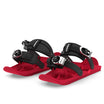
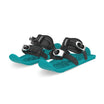












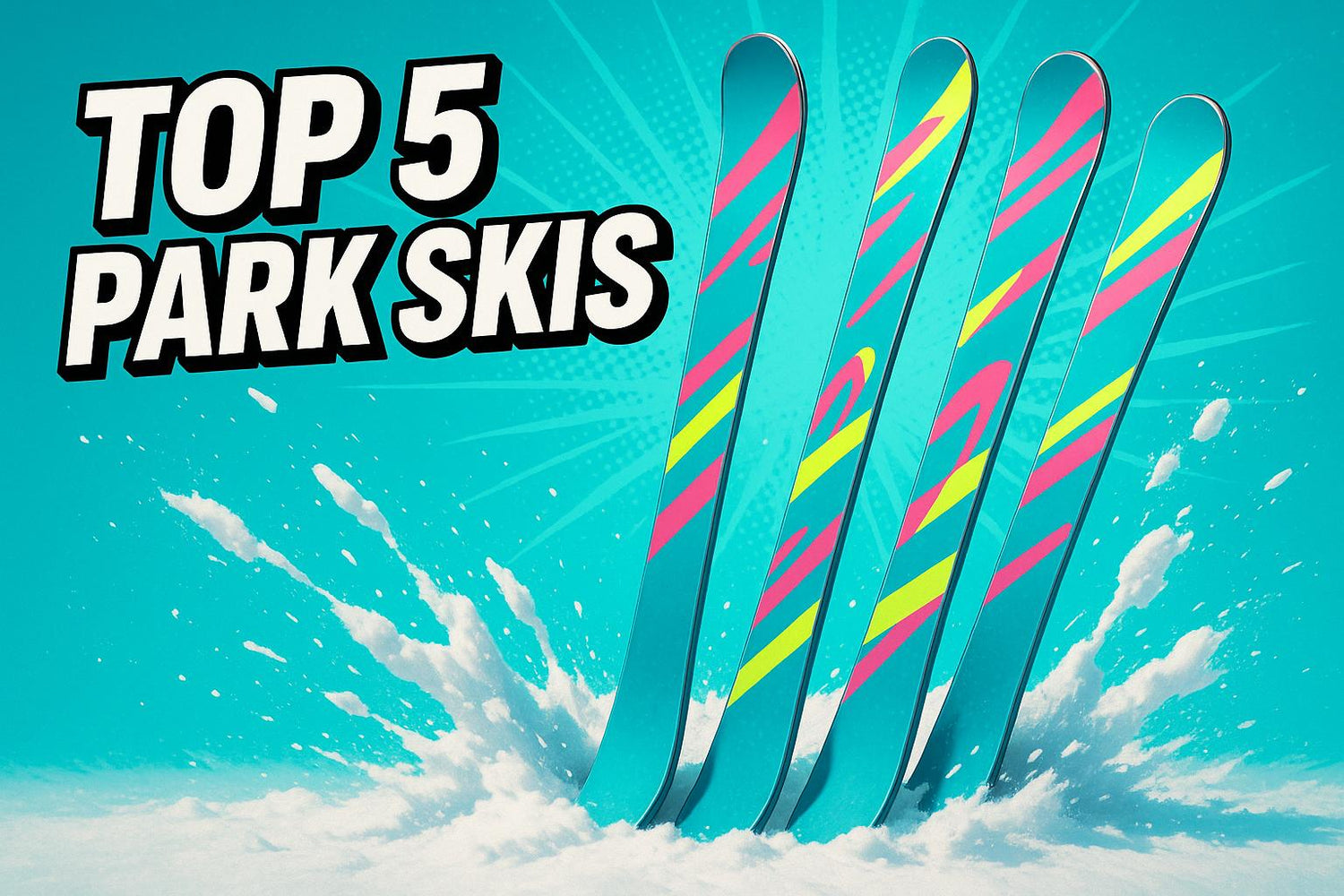
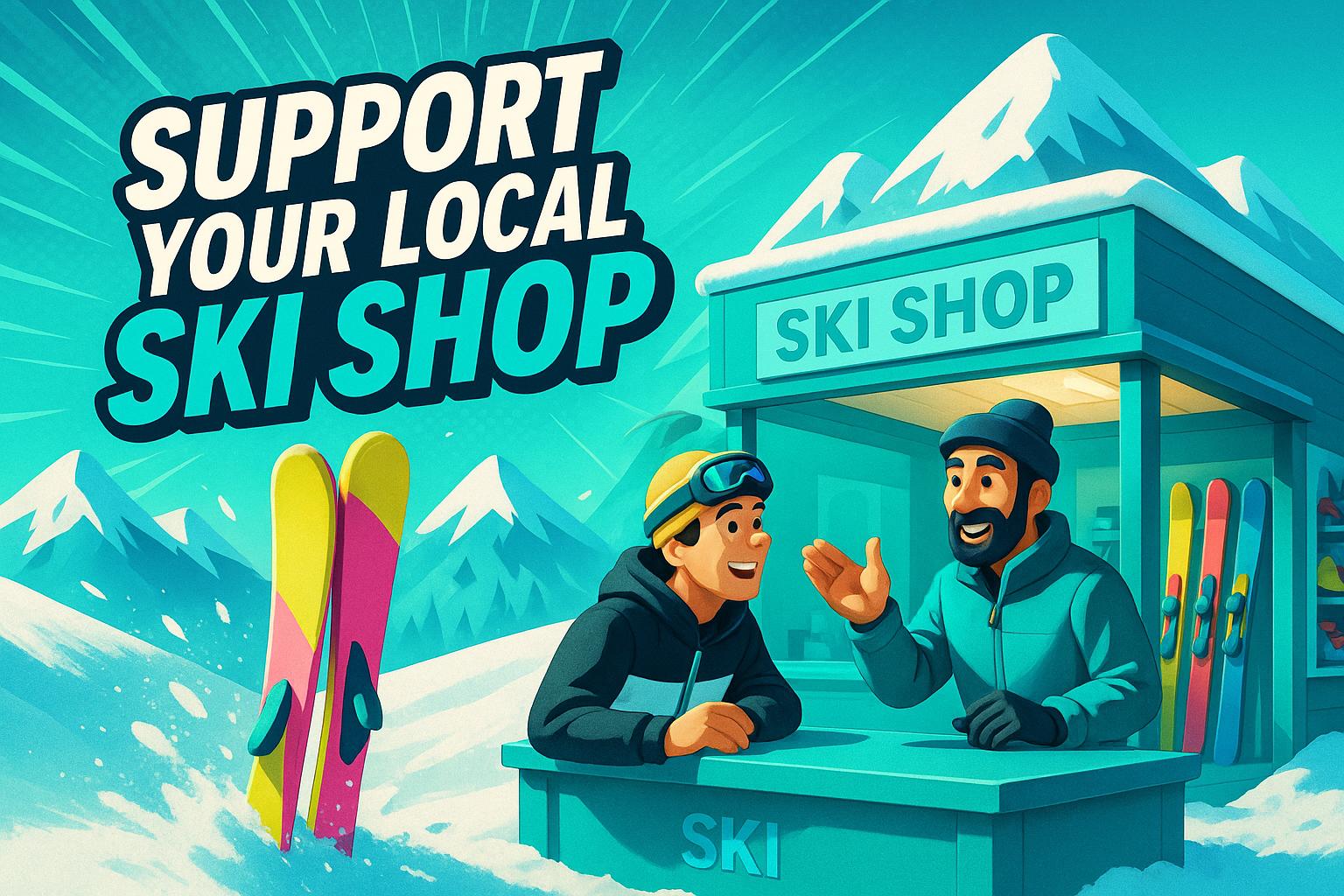
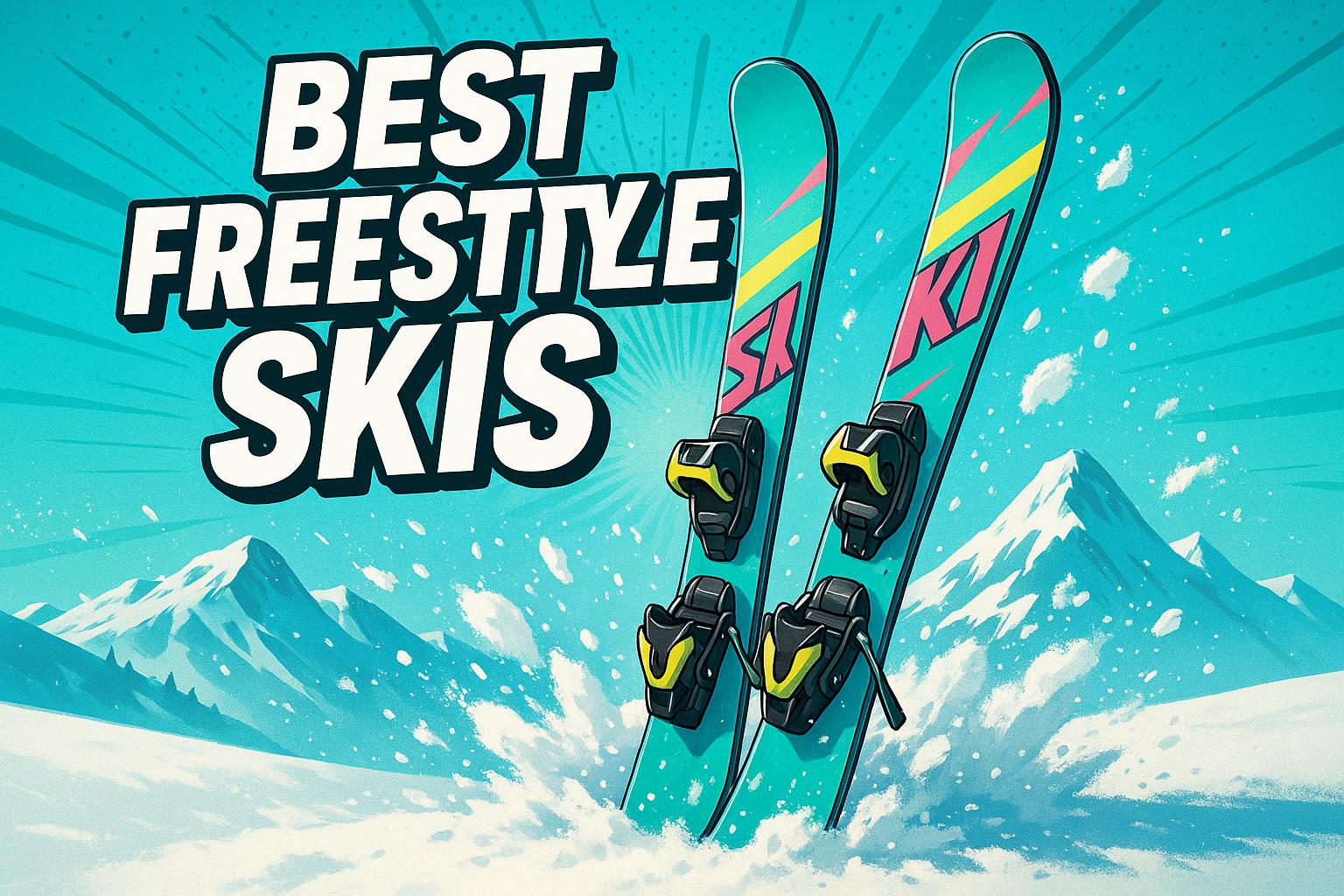




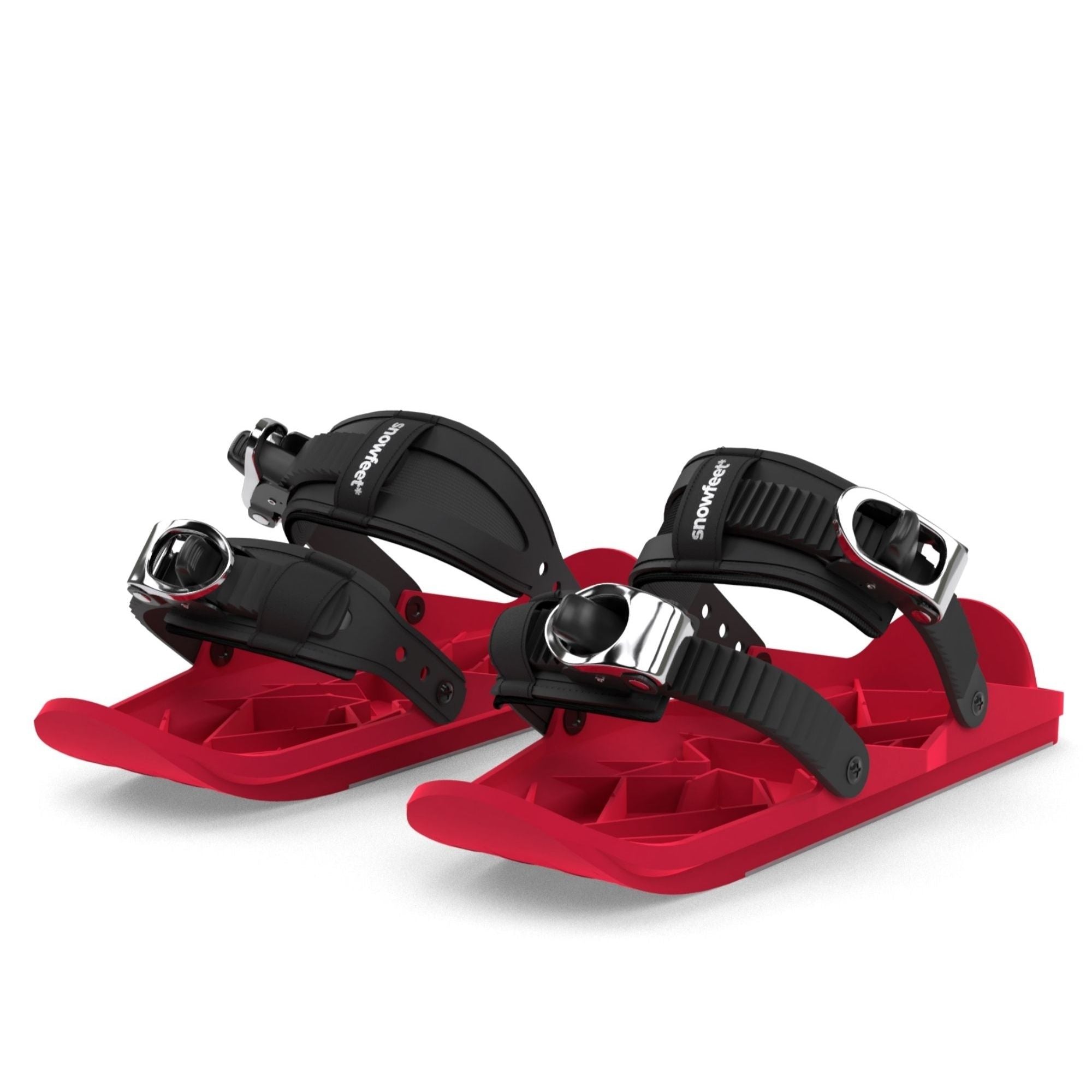
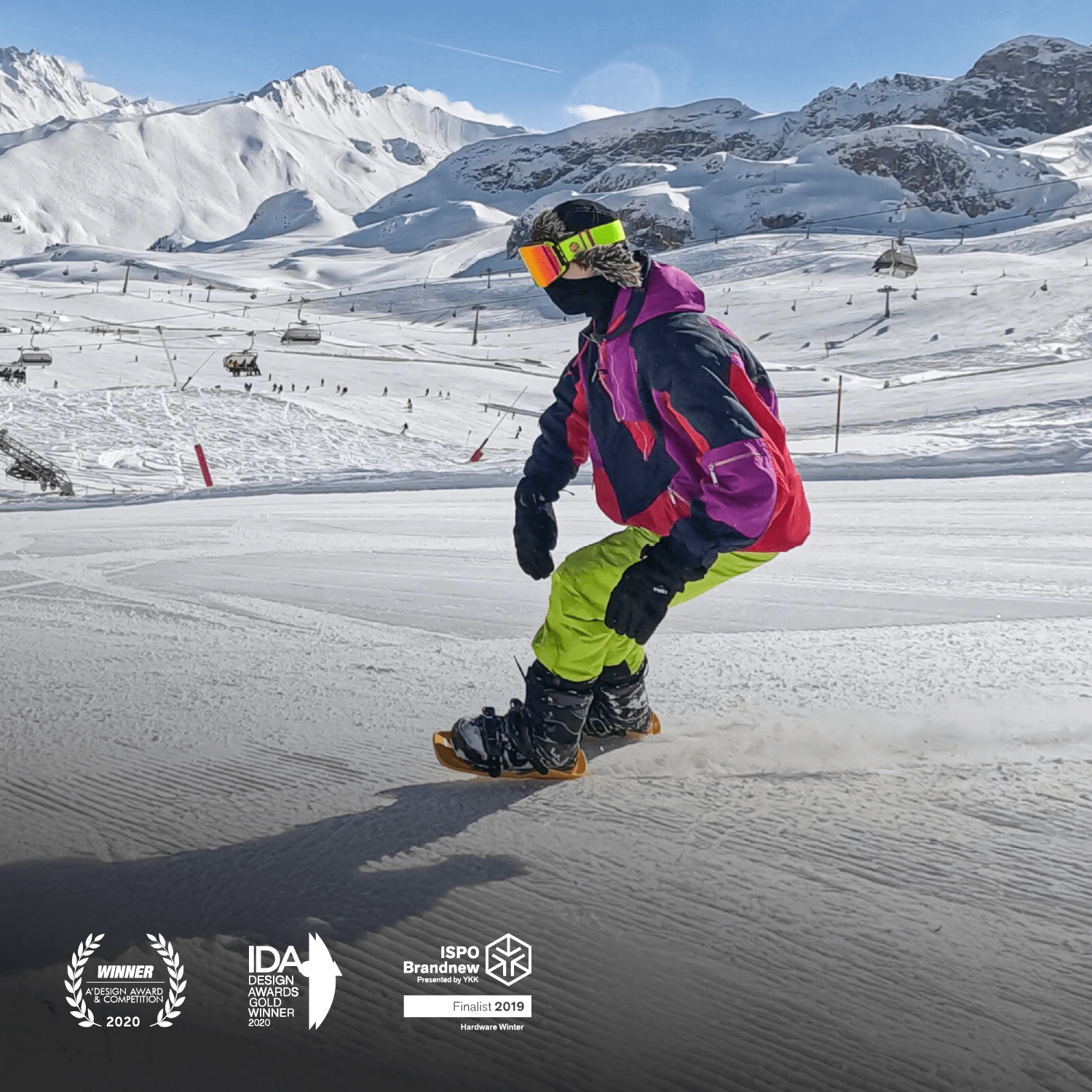




Lascia un commento
Questo sito è protetto da hCaptcha e applica le Norme sulla privacy e i Termini di servizio di hCaptcha.